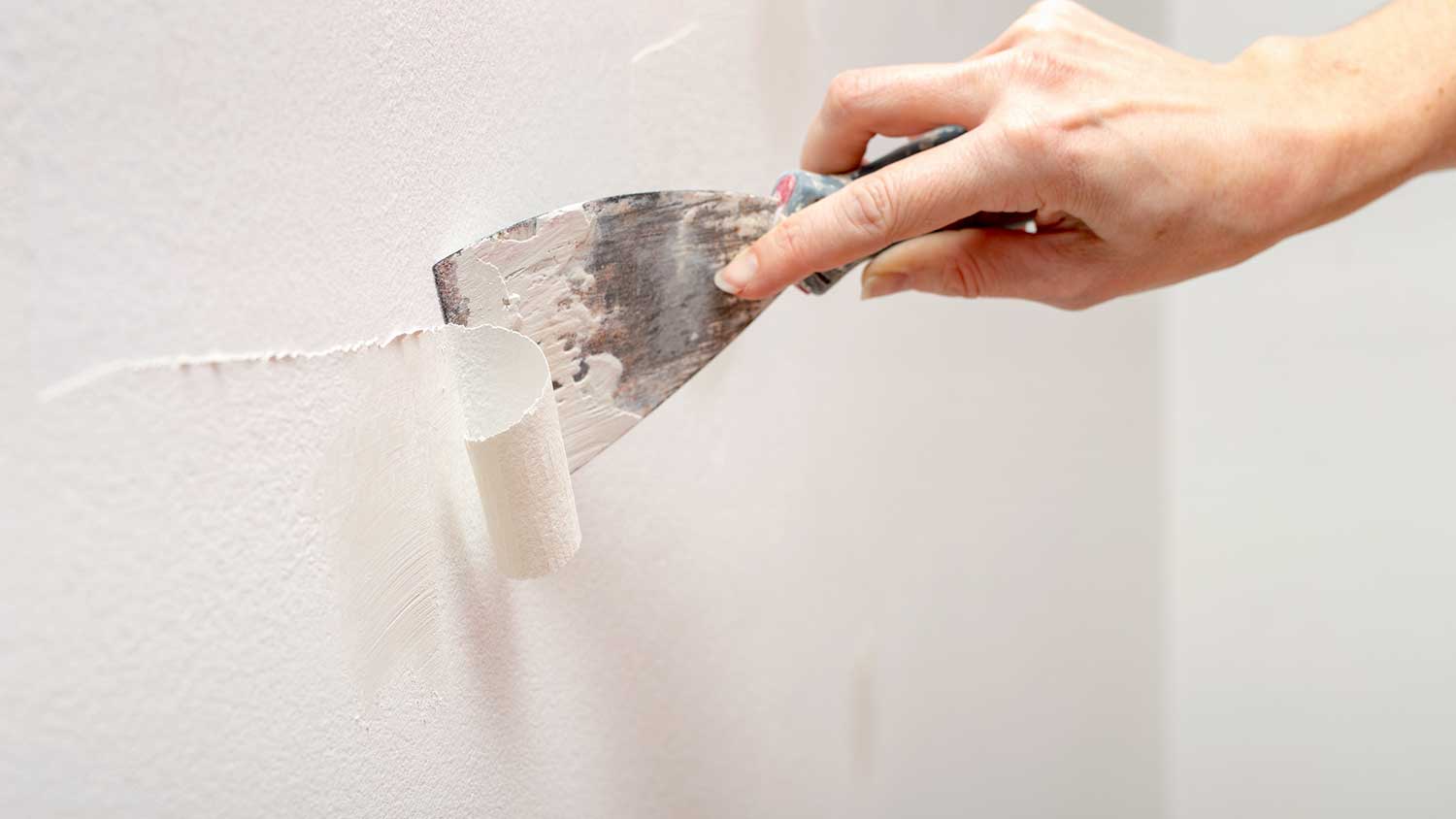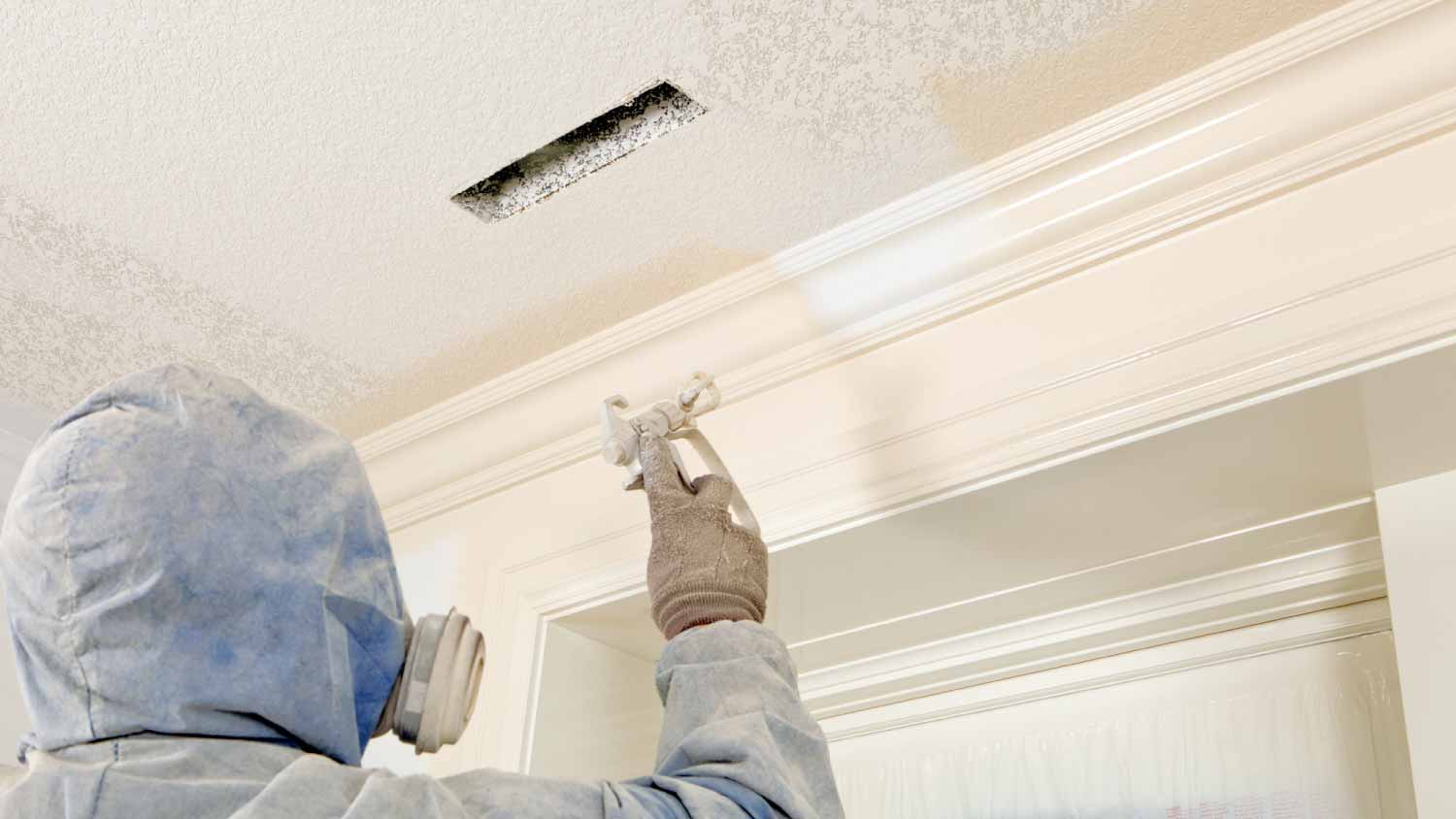
Looking to breathe new life into your space with a ceiling refresh? Learn about the cost to paint a ceiling and what factors can affect your total.
It can be a hassle, but sometimes a painted ceiling is worth it


Painting your basement ceiling can make the room look taller and brighter.
Due to the porous lumber, an unpainted, open beam ceiling will likely need three coats of paint.
Painting the beams of an open ceiling is less expensive than covering it up, but it is a permanent solution and won’t provide insulation.
Hiring a professional to paint your ceiling is highly recommended; the average cost to paint a ceiling is $250.
Deciding how to finish your basement ceiling can be tricky. Painting an unfinished ceiling can be a hassle, but it has the advantage of sealing bare lumber and can be used to brighten up a low-light space. While paint won’t give you any sound or temperature insulation, it can make a basement look larger and more modern. Whether you hire a painting pro or do the work yourself, here are the pros and cons of painting your basement ceiling.
When taking on this project, expect questions only a pro can answer. With our network of local pros, you'll get the job done and your questions answered—without the hassle and stress of doing it yourself.
Adding a fresh coat of paint to your basement ceiling can refresh your space without breaking the bank. As well as improving the look of your ceiling, painting can have some practical benefits.
Painting your ceiling a contrasting color to the walls adds visual height to your room, making the space feel larger. Using paint to draw the eye upwards is a trick designers often use in basements to counteract a low ceiling.
Since basements often lack windows, adding a lighter color to the ceiling can improve the quality and even the quantity of light in your room through reflection. The lighter your paint color, the wider the range of light it can reflect. Paint sheen plays a large role here, so choose wisely.
If you have an open beam ceiling in your basement, chances are that you also have some exposed pipes, ducts, and electrical conduits in your ceiling. Painting an open ceiling rather than covering it with drywall allows full access to the utility lines running through your basement ceiling while giving the room a clean, finished look.
Painting your basement ceiling is much more cost-effective than choosing to cover it up. Since the only tools and materials you’ll need are brushes, rollers, and drop cloths, your materials budget for this project is lower than most other options. A gallon of paint costs $20 to $30 on average.
Untreated wood can be a home for pests, and covering it up with drywall means creating a warm home for creatures looking to settle down. Painting the beams won’t add any nooks or crannies for critters to move into while sealing the lumber and updating your basement aesthetic.

Although painting your basement ceiling can be useful in many circumstances, there are some drawbacks to using paint to change the look of your space.
Painting a previously unfinished basement ceiling can take a lot of paint because raw lumber is porous and will soak up more paint than previously finished surfaces. Plan to do at least three coats of paint with some touch-ups to get an even color.
It takes a long, long time to cover all the crevices and corners of an exposed basement ceiling. You can use a paint sprayer to speed up the process, but this will increase your project costs, and you’ll still have to go back in with a brush to get the trickiest spots. Don’t forget to prep the room thoroughly when using a sprayer—things can get messy.
While painting your exposed ceiling can dramatically change the look of your basement, it won’t add any insulation for noise or temperature. If you are losing heat or AC through your floor into the basement, paint can’t help with that as other ceiling cover options for your basement can.
Once you paint an open beam basement ceiling, it’s very unlikely you’ll ever be able to remove the paint. If you don’t like the color, you can paint over it, but you’ll never have bare wood beams again. It might be worth trying a reversible option first if you’re unsure you’ll like the look.
While painting your ceiling will blend all of your pipes, ducts, and conduits more smoothly into the background, it can’t cover them like other types of ceiling finishes can. If you don’t like the look of exposed utility lines, opt for drywall instead and paint it your favorite color.
There are many other roads to take if you don’t like the look of a painted beam ceiling or even painted drywall. Cover your ceiling with planks like shiplap, install a suspended ceiling in a grid with tiles, or go for paneling like beadboard. These ceiling covers allow you to add insulation between the beams to help deaden sound and control temperature transfer between floors. Adding a cover to your open beam basement ceiling is relatively temporary and can be easily reverted to an open beam setup if you miss the natural wood look.
Painting your basement ceiling can make your basement space more modern and functional. If you’re not worried about adding insulation between floors and if you have time, painting your basement ceiling is more cost-effective than covering it up. If you decide to cover your ceiling, ensure you leave access for HVAC, plumbing, and wiring as required by local building codes. As for painting your ceiling by yourself, we don’t recommend it. Spending time atop a ladder is dangerous for an unpracticed homeowner, and the exposed fixtures in an open beam ceiling are not to be trifled with. It’s best to hire an experienced ceiling painter in your area to handle this project. Professional ceiling painters cost an average of $250, and it’s worth paying for the peace of mind.
From average costs to expert advice, get all the answers you need to get your job done.

Looking to breathe new life into your space with a ceiling refresh? Learn about the cost to paint a ceiling and what factors can affect your total.

The cost to remove texture from walls depends on square footage and the type of texture. Learn all the factors that will impact your budget in this guide.

The price of mortar-washing a brick exterior varies widely from single-storey bungalows to large family homes. Learn the average cost to German schmear a house.

Learning how to do a knockdown texture yourself can be a challenging, messy process. Learn the steps required, then decide whether to DIY or hire a pro.

Seeking the perfect color scheme for your mid-century modern house? We’ve got you. These are the most popular mid-century modern paint colors.

Every painting job is different, which means estimating pricing can be challenging. Go too high and you risk losing the job, but bid too low and you forfeit profit. Learn the average cost of different painting jobs so you know exactly what to charge.